This past winter I bought a juniper, procumbens ‘Nana,’ that was already well established as a bonsai. I repotted it soon after taking it home and have been letting it grow freely ever since. I removed about half of the old soil when I repotted, but until I remove the rest, I won’t expect the tree to be as vigorous as it can be in soil that drains better.
To prepare the tree for wiring, I recently thinned the foliage. I also removed a branch at the suggestion of Akio Kondo and extended the shari a bit. Here’s what the tree looked like before and after thinning.
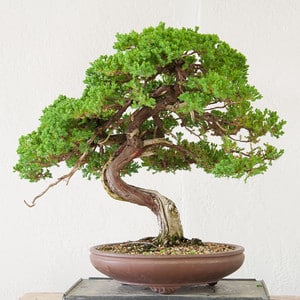
Front – before
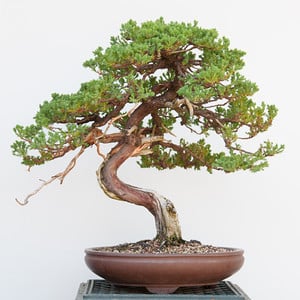
Front – after
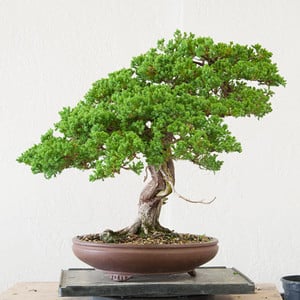
Left side – before
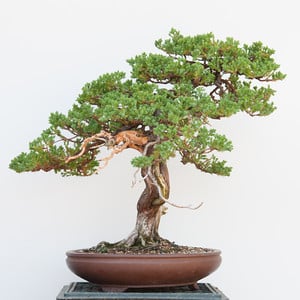
Left side – after
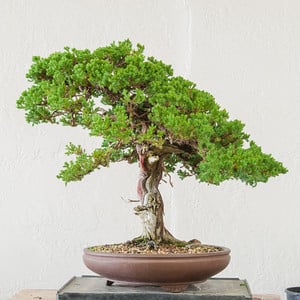
Right side – before
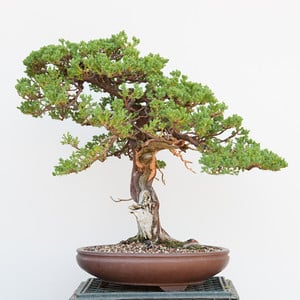
Right side – after
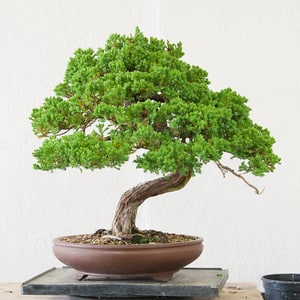
Back – before
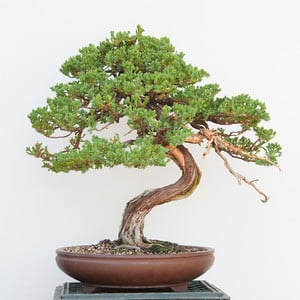
Back – after
As you can see, the shape of the tree didn’t change at all, but the overall density is lower than before. This is especially clear when the tree is viewed from above.
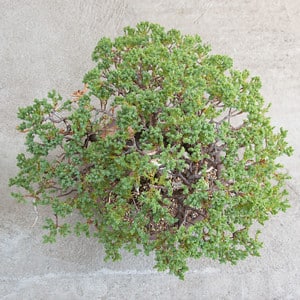
View from above
Next, I jinned a large back branch. The process was simple – I removed most of the secondary and tertiary branching and peeled away the bark on the remaining stubs.
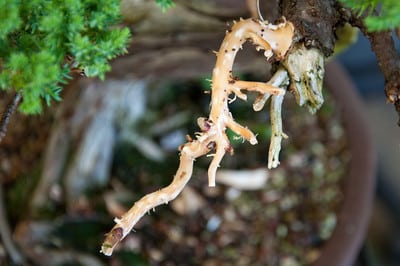
After stripping bark from the end of the jinned branch
It’s always easier to remove the bark when you make jin as postponing the work gives the bark time to dry out, making it much harder to remove.
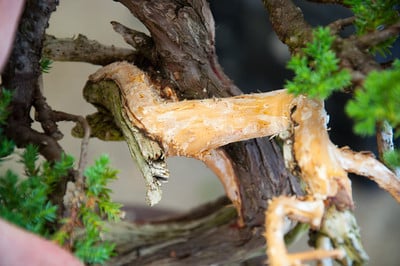
After stripping the bark at the base of the branch
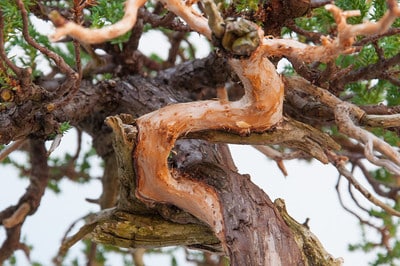
The jinned branch from below
This was a natural time to extend the shari, so Boon marked areas for me to work on.
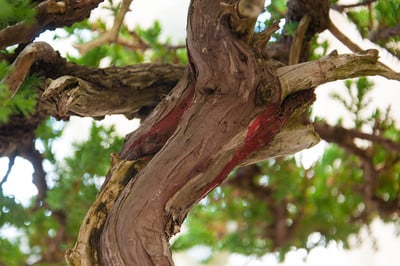
Red marks indicate where the new shari will be
I tend to take a lightweight approach to carving deadwood on bonsai. Shari often occurs naturally above and below dead branches as sap can no longer flow through these areas. The few areas I opened up were all adjacent to already dead areas.
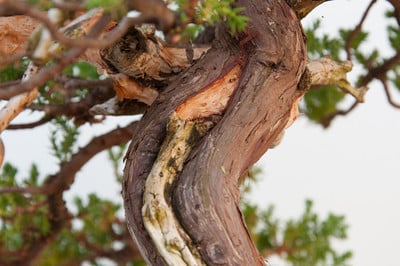
Extending the shari above a dead area
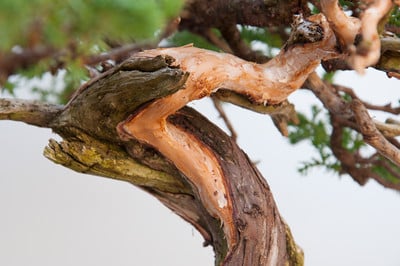
Extending shari below the jinned branch
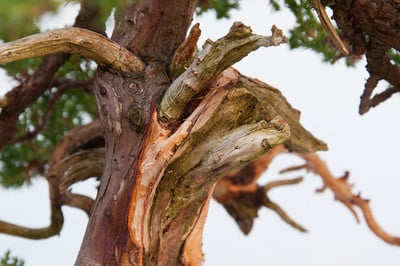
Extending the shari below a dead branch
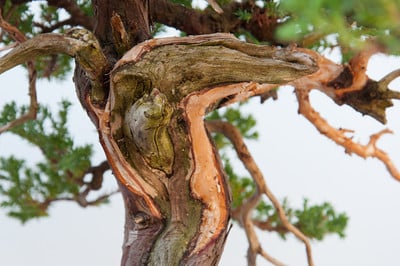
Widening the shari below dead branches
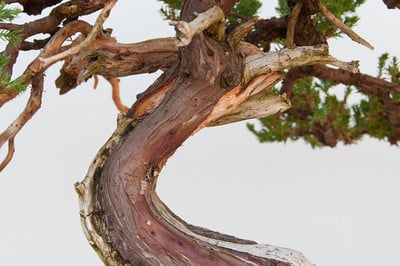
From the front
I’ll usually let the deadwood dry for up to a year or two before treating it with lime sulfur. Waiting will help me achieve a more natural effect as lime sulfur doesn’t soak in very well to new deadwood. I’ll say more about the thinning process Friday.
Subscribe to Bonsai Tonight
New Posts Delivered Every Tuesday and Friday
myfoodandflowers says
Nice work!
Paul says
Not a reply. A question. I have had very bad luck with Junipers living. You wrote” vigorous as it can be in soil that drains better.” Could over watering be one of my problems???
I have also been feeding them “Hollytone” for acid plants and now understand that they are not acid loving plants and should be given a tablespoon of dolomite lime every month. Is this true and could both of these factors be the reason for my junipers appear to dry up and die????
Jonas Dupuich says
Hi Paul – Great questions, but not always easy to answer. Water and fertilizer are key ingredients for keeping trees healthy, including junipers. Over-watering can be as damaging as under-watering. How often you should water depends on the temperature, humidity, sunshine the tree gets, as well as the soil it’s potted in. In summer, junipers typically get watered between once every other day (or less where it’s cool, moist and shady) up to three or four times a day where it’s hot, dry and sunny. Checking with someone in your area who’s had success with the variety is a great place to start – a forum like http://bonsaistudygroup.com is another good resource.
Junipers do well in a variety of soils so acid may not be a problem, but I generally don’t use fertilizer that contains manure as friends have had bad experiences with them (details on Holly-tone: http://www.espoma.com/p_consumer/pdf/products/tones/Esp_Holly.pdf). I hope this helps a bit!
paul3636 says
The “Hollytone” fact sheet has junipers as acid loving. I have sent them an email about the apparent contradiction on the use of dolomite lime (which they also sell) once a month on container grown acid loving plant such as junipers. If they reply I’ll send you a copy.
a thanks for steering me in the right direction.